#Massive Hoard Of Roman Silver Coins Found In Germany
Photo
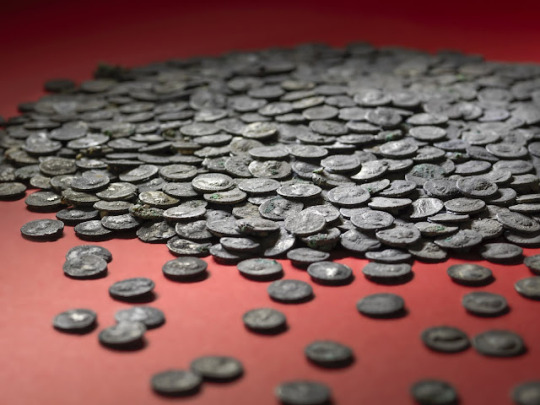
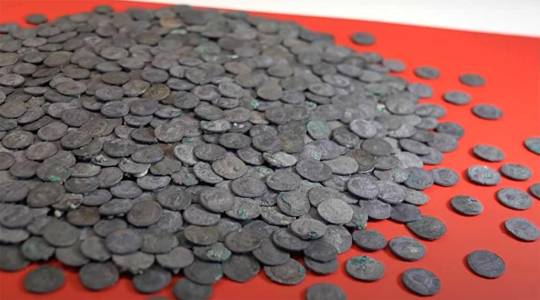
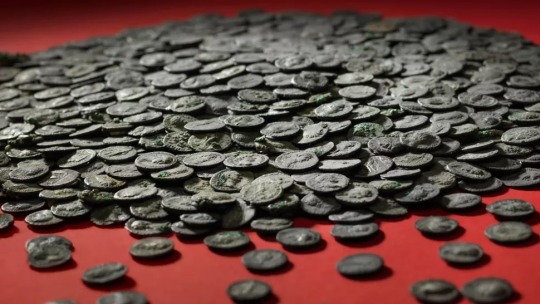
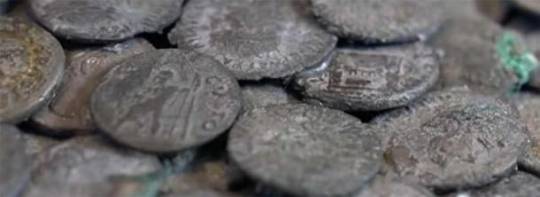



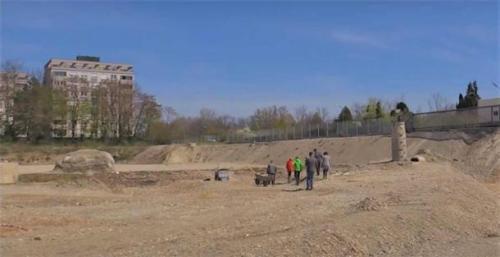
Massive Hoard Of Roman Silver Coins Found In Germany
During excavations in the district of Oberhausen under the supervision of the Augsburg City Archaeology Department, the largest Roman silver treasure ever found in what is now Bavaria was discovered. It comprises almost 5600 silver coins, or denarii, from the 1st and 2nd centuries AD and weighs about 15 kilograms.
The silver coins were discovered not far from the site of the earliest Roman base in Bavaria, also in the gravel of an old Wertach riverbed. There, the area of a future residential area had been archaeologically investigated. A storage container could not be found at the site. "We assume that the treasure was buried in the early 3rd century outside the city of Augusta Vindelicum near the Via Claudia running there and was not recovered. The hiding place was probably washed away many centuries later by a Wertach flood and the coins were thus scattered in the river gravel," explains Sebastian Gairhos, head of Augsburg's city archaeology. "A simple soldier earned between 375 and 500 denarii in the early 3rd century. Accordingly, the treasure has the equivalent value of about 11 to 15 annual salaries."
The oldest coins were minted under Emperor Nero (54-68 AD), the youngest under Septimius Severus shortly after 200 AD. Coinages of the Emperors Trajan, Hadrian, Antoninus Pius and Marcus Aurelius are particularly common. The rarest piece come from Didius Iulianus who was assassinated in 193 after only two months in office.
The scientific evaluation of the treasure is being carried out within the framework of a dissertation at the University of Tübingen under Professor Stefan Krmnicek. This is also expected to provide information on the circulation of coins in the early 3rd century as well as on the possible former owners and the circumstances of their concealment.
Augsburg can look back on more than 2000 years of urban history. According to the current state of affairs, the Romans had a military camp built in the newly conquered Alpine foothills in today's Oberhausen district as early as between 8 and 5 BC under Emperor Augustus. Numerous new finds presented by the city archaeology department in June this year seem to confirm this early dating and characterize Augsburg as the oldest Roman base in Bavaria.
The new finds were discovered during the archaeological investigation of a future residential area in Augsburg's Oberhausen district. They were located in a Roman-era riverbed of the Wertach, which had been channelled around 1900. Several 1,000 cubic metres of gravel were sifted through and brought to light weapons, tools, implements, jewelry, over 800 coins, crockery, transport vessels and much more. The recovered fragments and artifacts, with a total weight of over 400 kilograms, all come from the military base established in the 1st decade BC. Some of the finds are heavily corroded and encrusted beyond recognition. Conservation, uncovering and scientific processing are still pending.
Roman finds were discovered as early as 1913 during gravel extraction on the Oberhausen site, which could be dated to the period shortly after the conquest of the Alpine foothills (15 BC). At that time, however, archaeological documentation of the find contexts was omitted, so that numerous doubts arose later and the site experienced the most diverse interpretations. "The new finds, when analyzed scientifically, now allow us to draw numerous new conclusions - not only about the function of the site, the origin and composition of the troops and civilians, and the supply logistics - but above all about its dating," explains the head of urban archaeology, Dr Sebastian Gairhos.
The newly discovered objects - chronologically significant are mainly coins and imported pottery - seem to confirm the early dating of the base in today's Oberhausen to the years between 8 and 5 BC. In addition to military protection, the troops' task was to build up the local infrastructure. Towards the end of the reign of Emperor Augustus (ca. 10 AD), the site was replaced by a military camp for approximately 3000 soldiers in Augsburg's old town near the Stephansgarten. The rapidly growing civilian settlement outside the camp developed into the settlement Augusta Vindelicum, in the Middle Ages Augustburch and finally the city of Augsburg, which still bore the name of the emperor under whom the first base was established in Oberhausen.
#Massive Hoard Of Roman Silver Coins Found In Germany#Emperor Nero#Septimius Severus#Emperor Trajan#Emperor Hadrian#Antoninus Pius#Marcus Aurelius#Emperor Augustus#archeology#history#history news#ancient history#ancient civilizations#Roman History#Roman Empire
37 notes
·
View notes